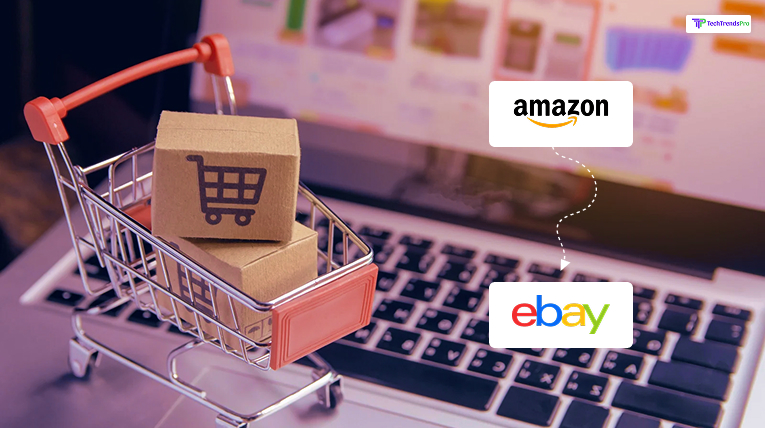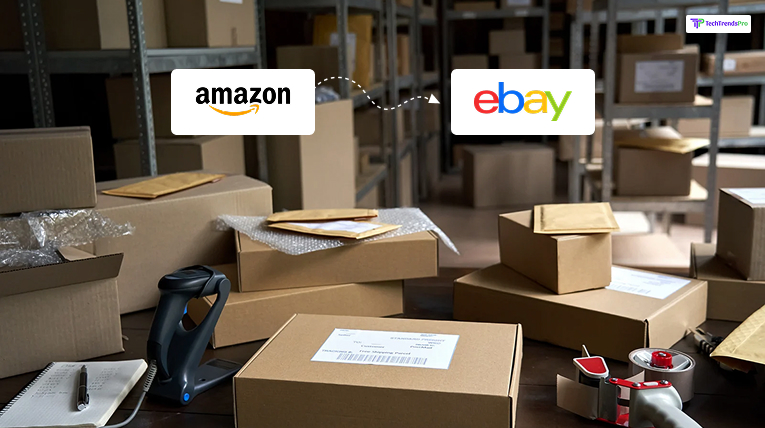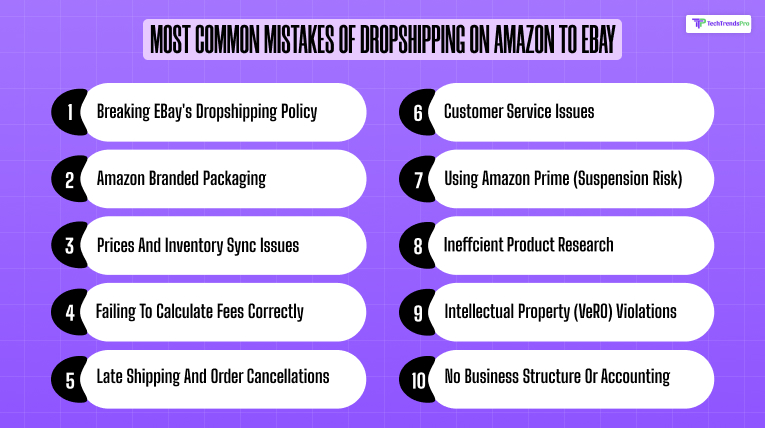
Since the day e-commerce was conceived, small business owners can now start a business with zero or little initial capital.
Among them, the most common way is dropshipping, and the tactic most individuals employ with it is Amazon to eBay dropshipping, i.e., products on Amazon resold on eBay, and after selling, shipped out from Amazon.
Although the process is simple, it is filled with traps that lead to account suspension, lost sales, or dissatisfied customers.
This article deals with the Amazon to eBay dropshipping common pitfalls and provides practical advice on how to avoid them and succeed at this business model.
Advantages Of Dropshipping On Amazon To eBay

Amazon has millions of sellers and is widely used for drop shippers worldwide. Therefore, dropshipping from Amazon to eBay is a profitable business model.
The main advantages of such a business are:
Amazon has more than 100 fulfillment centers (many more planned) in the USA in different locations. You can ensure short delivery terms on eBay if you have an Amazon Prime status.
You can easily find a profitable niche for dropshipping, as various goods are available. You can try unlimited times as you do not bear storage costs; only an update of listings is required on eBay.
Amazon Prime clients have a 30-day free return period. Such an option for your customers on eBay.
Much available software for automatic order fulfillment from Amazon to eBay for market research and delivery tracking.
For sure, there are some disadvantages, but you should still try this business opportunity.
The Most Common Mistakes Of Dropshipping On Amazon To Ebay

There are a bunch of mistakes common for newcomers to eBay or Amazon that it is possible to skip for a more painful and successful business start.
Pitfall 1: Breaking eBay’s Dropshipping Policy
The Risk:
eBay does not prefer dropshipping at all. Their Dropshipping policy severely requires the sellers be the seller of record and dispatch products directly from a wholesale supplier. Having a second retailer (e.g., Amazon) is highly common, though severely disapproved of, and may lead to account restrictions or suspension.
How to Avoid It:
- Utilize actual wholesalers or original suppliers.
- Utilize low risk tolerance judiciously and keep in mind that technically, you’re not in complete compliance.
- Execute low visibility, with no visible Amazon-branded boxes.
Pitfall 2: Amazon Branded Packaging
The Risk:
Arguably, the most glaring indication that you’re Amazon dropshipping is the Amazon-branded boxes and receipts. eBay buyers are being scammed when they receive a product in Amazon packaging, resulting in negative feedback and eBay reporting.
How to Stay Away From It:
- Ship via Amazon Prime Gift Option to remove prices (though not always successful).
- Ship via non-Prime sellers or third-party Amazon sellers in blank packaging wherever possible.
- Sell Fulfilled by Merchant (FBM) products instead of Fulfilled by Amazon (FBA).
Pitfall 3: Prices And Inventory Sync Issues
The Danger:
Amazon prices and inventory sync in real-time. A product goes out of stock or even fluctuates in price before shipping out in the eBay sale, leading to loss or cancellation.
Avoiding It:
- Employ automation tools like AutoDS, DSM Tool, or PriceYak for listing syncing.
- Employ buffer margins so that profit is not drained by price volatility.
- Keep daily inventory status in check so that overselling is avoided.
Pitfall 4: Failing To Calculate Fees Correctly
The Danger:
eBay and Amazon both take fees. Incorrect calculation of them cuts down profit and sometimes results in a loss.
eBay Fees:
- Final value fee (~13-15%)
- Listing fees (depending on your store plan)
- PayPal fee (if paid)
Amazon Fees:
- Product price
- Shipping (apart from Prime)
How to Avoid It:
- Utilize a profit calculator prior to listing products.
- Add shipping, returns, customer service fees, and tax..
- Apply at least a 30-40% markup to cover surprises.
Pitfall 5: Late Shipping And Order Cancellations
The Risk:
Amazon shipping estimates can be quicker than eBay’s. Backorders or cancellations will hurt your seller feedback and increase defect rates.
How to Avoid It:
- Choose fast shipping options—preferably products with Prime delivery or one/two-day shipping.
- Do not list items with low stock or high shipping estimates.
- Keep your eBay statistics under control in order not to reach caps.
Pitfall 6: Customer Service Issues
The Danger:
eBay customers can insist on returns, inquire about items, or deny claims. If you do not have the answers ready for the above in the form of good feedback or refunds, it results in negative feedback or refunds.
Avoidance:
- Use canned responses to manage regular questions.
- Have a good return policy—though don’t forget Amazon does it too generously with returns, you have to make it easy too.
- Check eBay messages every day.
- Stand up for negative feedback early on and continue providing refunds where appropriate in order to maintain integrity on your account.
Pitfall 7: Using Amazon Prime (Suspension Risk)
The Risk:
Free shipping to most Amazon-to-Ebay dropshippers is obtained from the use of Amazon Prime. But Amazon absolutely forbids the use of Prime for resale, and if they catch you, they can suspend or even get your account banned.
How to Avoid It:
- Don’t dropship by usage of Prime.
- Create a business Amazon account where there is bulk purchasing opportunity.
- Utilize non-Prime sellers or FBM listings.
Pitfall 8: Inefficient Product Research
The Danger:
Low-movers or competing products would yield low-selling volumes or backorders.
Avoidance Hints:
- Utilize product research tools like Zik Analytics, Terapeak, or eBay Sold Listings.
- Always keep in mind niche products, trend products at some particular moment in time, or low-competition products.
- Never sell brand-named or offensive intellectual property content.
Pitfall 9: Intellectual Property (VeRO) Violations
The Danger:
Intellectual property rights infringing products or brand-named product selling will lock your eBay account permanently under the VeRO program.
How to Avoid It:
- Never use brand names or copyrighted work.
- Sell only unbranded or generic goods.
- Test all businesses or products to ascertain whether they fall under VeRO.
Pitfall 10: No Business Structure or Accounting
The Risk:
Operationalizing the company to conduct company business online and not registering or keeping track of expenses and taxes will be too hard to do in a couple of seconds, specifically during tax season.
How to Prevent It:
- Become a local sole proprietor, LLC, or similar entity.
- Utilize accounting software like QuickBooks or Wave.
- Accounting for each receipt, income, and expense.
- Engage the services of a seasoned e-commerce tax practitioner.
The Importance of Amazon To Ebay Dropshipping!
Amazon-to-Ebay dropshipping is a promising portal into e-commerce, but beware a few pitfalls. Policy-violation and customer-complaint purgatory, price mismatch, and account suspension are just the start.
Yet, with sensible planning, automation, research, and regular checks, it’s still possible to steer around the pitfalls and create a viable business.
The focus is to operate it as a business, not get rich quick, always with top attention on account health, customer satisfaction, and number one compliance.
Read Also:






